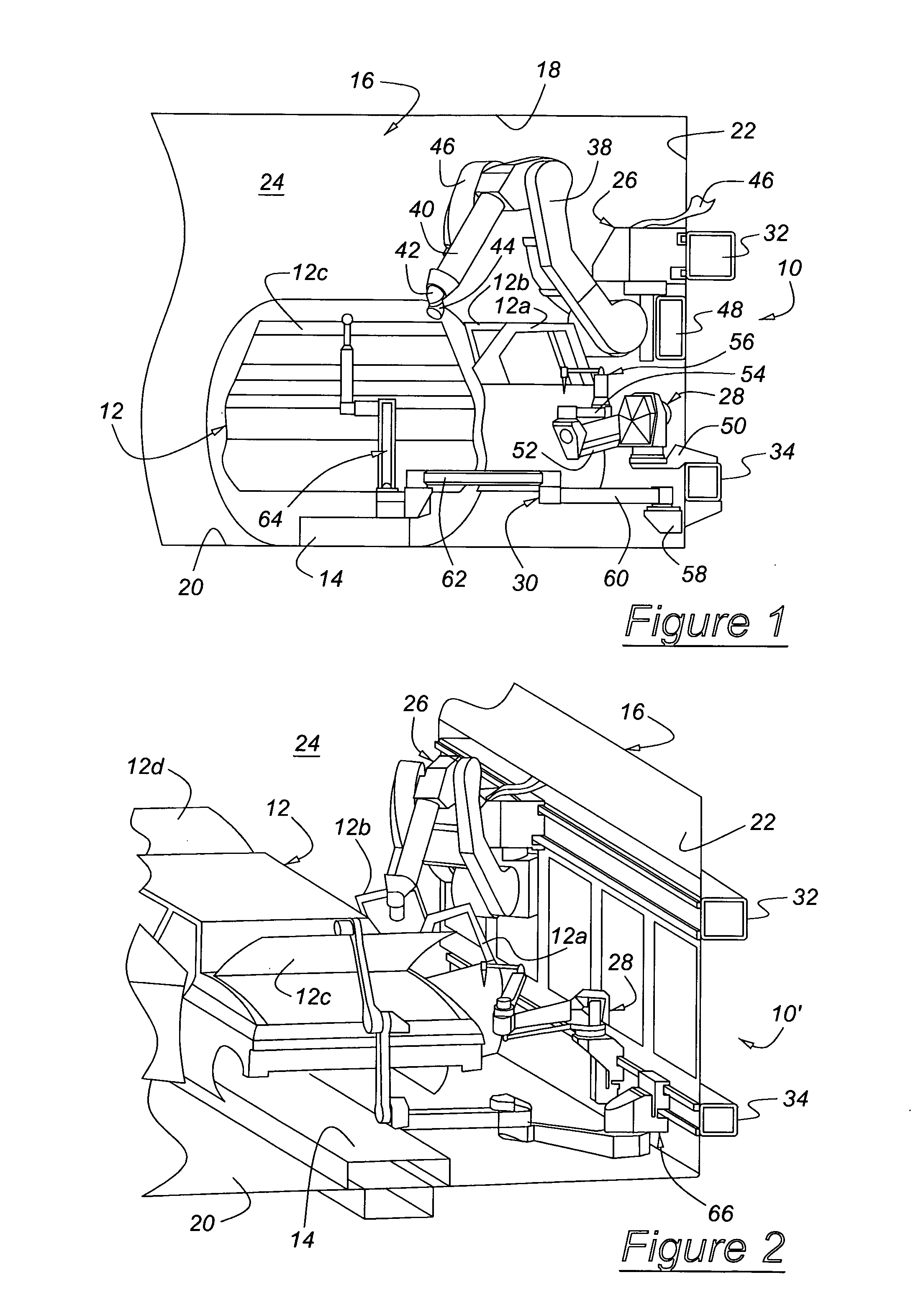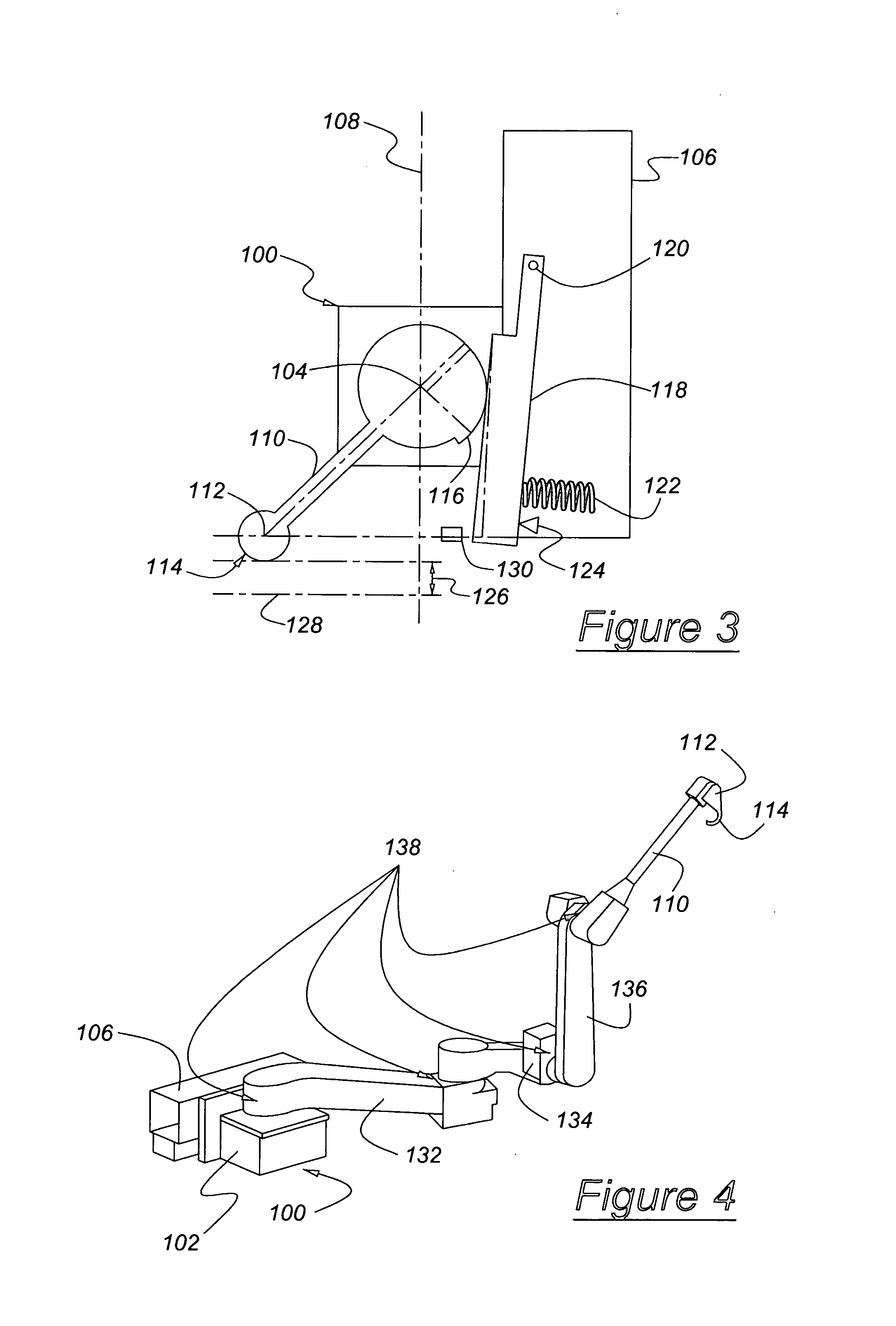Compact robotic painting booth
a robotic painting and compact technology, applied in the field of robotic systems, can solve the problems of robot stopping, no protection for a person in the safety zone, and the need to disable the light curtain
- Summary
- Abstract
- Description
- Claims
- Application Information
AI Technical Summary
Benefits of technology
Problems solved by technology
Method used
Image
Examples
third embodiment
[0058] In FIG. 12, there is shown the present invention for isolating the conductive components. The circulation system 308, which includes a color change system, is connected to a source of solvent 330 and a source of pressurized air 332. The circulation system 308 communicates through an electrically isolated line 310′ to the component mixing system 316′, which can be a static mixing tube or another device used in multi-component delivery systems. A canister isolation system is used for the nonconductive material, such as resin. If a non-conductive component is used for one of the materials, a more traditional means such as a gear pump or flowmeter 312′ can be used to deliver that fluid to the multi-component mixing system 316′.
[0059] The mixed material can be applied by any direct charge electrostatic paint applicator 318′, such as a rotary atomizer, where the paint and / or applicator are charged (electrostatics), or an electrostatic gun applicator.
[0060] Pressure transducers 314...
fourth embodiment
[0061] There is shown in FIG. 13 the present invention for isolating the waterborne or substantially conductive component when only the waterborne or substantially conductive material is provided and no second component is added. This is a batch painting system.
[0062] The paint circulation system 308 delivers paint to a color valve stack. Different colors of paint are supplied to a color changer 326, which delivers the paint to a pair of paint valves 328, one of which supplies paint to one of the canisters 320, 321. A pair of canisters 320, 321 alternately supplies paint through an isolation manifold 322 to a robot-mounted applicator 324. Canister 320 is shown in a filling position where paint is delivered to canister 320 through valve 328 at a docking station. Canister 321 is shown in its painting position. Each canister consists of a stainless steel canister sleeve, canister body, piston, ram, ball screw, motor, and drive frame. The painting canister 321 must be suitably undocked ...
PUM
| Property | Measurement | Unit |
|---|---|---|
| diameter | aaaaa | aaaaa |
| diameter | aaaaa | aaaaa |
| diameter | aaaaa | aaaaa |
Abstract
Description
Claims
Application Information
 Login to View More
Login to View More - R&D
- Intellectual Property
- Life Sciences
- Materials
- Tech Scout
- Unparalleled Data Quality
- Higher Quality Content
- 60% Fewer Hallucinations
Browse by: Latest US Patents, China's latest patents, Technical Efficacy Thesaurus, Application Domain, Technology Topic, Popular Technical Reports.
© 2025 PatSnap. All rights reserved.Legal|Privacy policy|Modern Slavery Act Transparency Statement|Sitemap|About US| Contact US: help@patsnap.com



